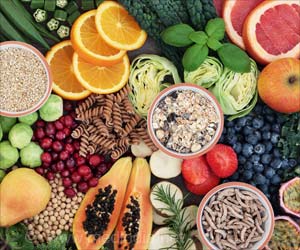Food demand is rising as people get bigger. Feeding nine billion people in 2050 will be harder than it would be today, finds a new study.

‘An average person in the future will need more food than today. Alterations in eating habits, attitudes towards food waste, a rise in height and body mass, and demographic changes are a few reasons.
’
Read More..




On the other hand, "Zero Hunger" is the second UN Sustainable Development Goal and its challenge is to meet global growing food demand.Read More..
The world's population could level off at around nine billion in a few years, compared to just over 7.6 billion now.
But the average person in the future will require more food than today. Changes in eating habits, attitudes towards food waste, increases in height and body mass, and demographic transitions are some of the reasons.
People are changing
Professor Daniel B. Müller and colleagues Felipe Vásquez and Vita analyzed changes in the populations of 186 countries between 1975 and 2014.
Advertisement
The first phenomenon contributes to increased food demand. The second counteracts the former one.
Advertisement
"An average global adult consumed 2465 kilocalories per day in 1975. In 2014, the average adult consumed 2615 kilocalories," says Vita.
Globally, human consumption increased by 129 percent during this time span. Population growth was responsible for 116 percent, while increased weight and height accounted for 15 percent. Older people need a little less food, but an aging population results in only two percent less consumption.
"The additional 13 percent corresponds to the needs of 286 million people," Vásquez says.
This, in turn, corresponds approximately to the food needs of Indonesia and Scandinavia combined.
Major differences
Considerable variations exist between countries. Weight gain per person from 1975 to 2014 ranged from 6 to 33 percent, and the increased energy requirement ranged from 0.9 to 16 percent.
An average person from Tonga weighs 93 kilos. An average Vietnamese weighs 52 kilos. This means that Tonga people need 800 more kilocalories each day or about four bowls of oatmeal.
Some countries are changing quickly. On Saint Lucia in the Caribbean, the average weight rose from 62 kilos in 1975 to 82 kilos 40 years later.
The lowest and highest changes are found in Asia and Africa, reflecting the disparities between the countries of these continents.
Not previously calculated
"Previous studies haven't taken the increased demands of larger individuals and aged societies into account when calculating the future food needs of a growing population," said Vásquez.
Most studies estimate that an average adult's food needs remain constant over time and fairly similar across nations. But that's not how it is.
"These assumptions can lead to errors in assessing how much food we'll actually need to meet future demand," Vásquez says.
This study provides relevant information for the UN's Food and Agriculture Organization (FAO), which is a leader in the struggle to ensure food security for all.
Vásquez and Vita say that we have to look at more than just the number of people in an area to understand the mechanisms behind their consumption. This requires a multidisciplinary approach that considers both social and physiological factors.
This study's analysis involved bio-demography, a hybrid of biology and demography. The researchers adapted a model for dynamic systems that are often used in industrial ecology to study resource stocks and flows.
Source-Eurekalert















